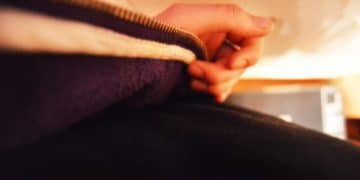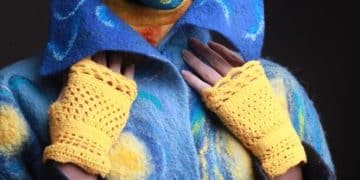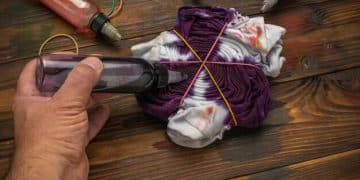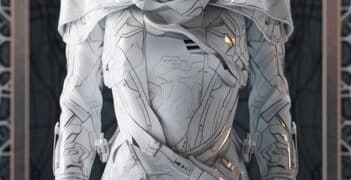Sewing Cosplay Costumes: A Beginner’s Guide to Techniques

A Beginner’s Guide to Sewing Cosplay Costumes: Essential Stitches and Techniques provides novice cosplayers with fundamental sewing skills, guiding them through fabric selection, basic stitches, and essential construction methods to create impressive and durable costumes.
Embarking on your cosplay journey? This beginner’s guide to sewing cosplay costumes: essential stitches and techniques will equip you with the basic skills needed to bring your favorite characters to life through personalized, handcrafted costumes.
Getting Started: Your Cosplay Sewing Toolkit
Every great project begins with the right tools. Building a cosplay costume is no exception. Having the right equipment not only makes the sewing process easier but also improves the quality of the final product.
Essential Sewing Tools
Before you even think about fabric, let’s gather your toolbox. These are the must-have items for any beginner cosplayer looking to sew their own costumes.
- Sewing Machine: A reliable sewing machine is essential. Choose one that is user-friendly, with adjustable stitch settings.
- Fabric Scissors: A sharp pair of fabric scissors is crucial for clean cuts. Keep them exclusively for fabric to maintain their sharpness.
- Measuring Tape: Accurate measurements are the foundation of a well-fitted costume. A flexible measuring tape is a must.
- Seam Ripper: Mistakes happen. A seam ripper helps you undo stitches without damaging the fabric.
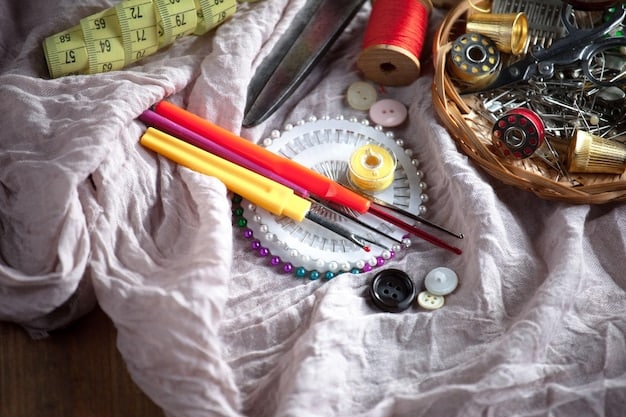
Choosing the Right Fabric
The fabric you select can drastically affect the look and feel of your cosplay. Understanding different fabric types and their properties is vital.
- Cotton: An affordable and versatile option, easy to work with and great for practice projects.
- Polyester: Durable and wrinkle-resistant, making it a good choice for costumes that will endure long days at conventions.
- Spandex: Ideal for form-fitting costumes, providing stretch and comfort.
By ensuring you have the right tools and a basic understanding of fabric types, you’re setting a solid foundation for your cosplay sewing journey.
Mastering Basic Sewing Stitches
Stitches are the backbone of any sewing project. Before tackling complex cosplay designs, master these essential stitches to ensure your costume is sturdy and well-constructed.
The Straight Stitch
The straight stitch is the most fundamental stitch in sewing. It’s used for joining fabric pieces together and creating seams.
To perform a straight stitch, simply guide the fabric under the sewing machine needle, maintaining a consistent seam allowance. Practice on scrap fabric to get a feel for the machine’s speed and stitch length.
The Zigzag Stitch
The zigzag stitch is versatile and used for finishing raw edges to prevent fraying, as well as for applying elastic and creating decorative effects.
Adjust your sewing machine to the zigzag setting. Experiment with different widths and lengths to achieve the desired look. When finishing edges, ensure the zigzag stitch covers the raw edge completely.
The Hand Stitch
Sometimes, a sewing machine just won’t do. Hand stitches are invaluable for intricate details, securing linings, and making small repairs.
Thread your needle and tie a knot at the end. Bring the needle up through the fabric, take a small stitch, and repeat. Common hand stitches include the running stitch, backstitch, and slip stitch.
With these stitches under your belt, you’re well on your way to creating professional-looking cosplay costumes that stand the test of time and attention at conventions.
Pattern Basics: Understanding and Using Cosplay Patterns
Patterns are your roadmap to a successful cosplay. Learn to read and use them effectively to avoid costly mistakes and ensure a great fit.
Decoding Pattern Symbols
Patterns can look intimidating, but understanding the basic symbols simplifies the process.
- Cutting Lines: Solid lines indicate where to cut the fabric.
- Seam Allowances: Dotted lines show where to stitch the fabric pieces together.
- Grain Lines: These lines must be aligned with the fabric’s grain for proper drape and fit.
Taking Accurate Measurements
Accurate measurements are crucial for choosing the right pattern size and achieving a well-fitted costume. Measure yourself or have someone else measure you while wearing minimal clothing.
Key measurements include bust, waist, hips, and height. Compare your measurements to the pattern’s size chart and choose the closest size. Remember, it’s always better to choose a slightly larger size and make alterations than to try to squeeze into a too-small garment.
Adjusting Patterns for a Custom Fit
Often, patterns won’t fit perfectly straight out of the envelope. Learning to make basic adjustments can transform a standard pattern into a custom-fit masterpiece.
Common adjustments include lengthening or shortening pattern pieces, adjusting for different bust or hip sizes, and altering the neckline or sleeves to match your desired design.
By mastering pattern basics, you’ll unlock the potential to create truly unique and perfectly fitted cosplay costumes that showcase your creativity and skill.
Assembling Your Costume: Step-by-Step Construction
Construction brings your cosplay vision to life. Follow these step-by-step guidelines to assemble your costume with confidence and precision.
Cutting Fabric Accurately
Accurate cutting is essential for a well-aligned costume. Before cutting, ensure your fabric is smooth and flat. Pin the pattern pieces securely to the fabric, following the grain lines.
Use sharp fabric scissors to cut along the cutting lines, making smooth, continuous strokes. Avoid lifting the fabric while cutting to maintain accuracy.
Pinning and Basting
Pinning keeps fabric pieces aligned while sewing. Insert pins perpendicular to the seam allowance, about an inch apart. Basting involves using long, loose stitches to temporarily hold fabric pieces together before machine sewing.
This is particularly useful for complex seams or slippery fabrics. Basting allows you to check the fit and make adjustments before committing to permanent stitches.
Sewing Seams and Hems
Sewing seams and hems neatly ensures a professional finish. Use a straight stitch for seams, maintaining a consistent seam allowance.
For hems, fold the fabric edge twice, pressing each fold for a crisp finish. Stitch close to the folded edge, using a matching thread color. Consider using a blind hem stitch for an invisible finish.
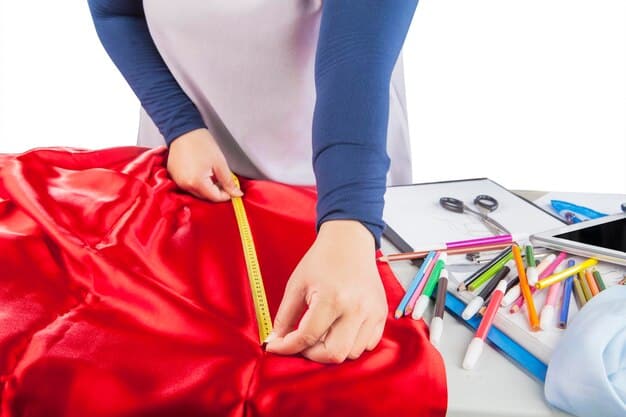
By following these construction steps diligently, you’ll be able to assemble your cosplay costume with confidence, creating a finished product that is both durable and visually striking.
Advanced Techniques: Piping, Appliqués, and Details
Elevate your cosplay with advanced techniques that add professional-level details. These techniques can transform a simple costume into a standout piece.
Creating and Applying Piping
Piping adds dimension and definition to edges and seams. To create piping, cut a strip of bias tape and wrap it around a length of cording.
Stitch close to the cording, creating a channel. To apply piping, sandwich the piping between two layers of fabric, aligning the raw edges. Stitch through all layers, close to the piping, to secure it in place.
Designing and Adding Appliqués
Appliqués are decorative fabric pieces sewn onto a larger surface. They’re great for adding intricate designs and logos to your cosplay.
Cut out your appliqué design from fabric. Use fusible webbing to adhere the appliqué to the costume fabric temporarily. Stitch around the edges of the appliqué, using a satin stitch or a decorative stitch, to secure it permanently.
Adding Embellishments and Details
Embellishments like beads, sequins, and embroidery can add texture and visual interest. Be sure to choose embellishments that are durable and secure.
Hand-sew beads and sequins onto your costume, using strong thread. For embroidery, transfer your design onto the fabric and use embroidery floss to create the desired effect. Consider using a stabilizer to prevent the fabric from puckering.
Mastering advanced techniques allows you to add eye-catching details and professional flourishes to your cosplay, setting your creations apart from the crowd.
Finishing Touches: Fitting, Adjustments, and Care
The final stage is crucial. Ensure your costume fits perfectly and that you know how to care for it, so it lasts through many conventions.
Conducting a Fitting Session
Once your costume is mostly assembled, try it on to check the fit. Have a friend help you spot areas that need adjustments.
Pay attention to comfort, mobility, and overall appearance. Mark any areas that need to be taken in, let out, or altered in any way.
Making Final Adjustments
Based on your fitting session, make any necessary adjustments. This might involve re-sewing seams, adding darts for a better fit, or hemming the garment to the right length.
Take your time and double-check all adjustments before making permanent changes. A well-fitted costume is a comfortable and flattering costume.
Cosplay Care and Maintenance
Proper care ensures your costume lasts for many years. Always check the fabric care instructions before washing or cleaning your cosplay.
Hand-washing is often the safest option, especially for delicate fabrics or costumes with embellishments. Store your cosplay in a garment bag to protect it from dust and damage. Avoid storing it in direct sunlight, which can fade the colors.
With careful attention to fitting, adjustments, and maintenance, your cosplay costume will not only look great but also endure the test of time, becoming a cherished part of your crafting journey.
| Key Point | Brief Description |
|---|---|
| 🧵 Essential Sewing Tools | Equip yourself with key tools like a sewing machine, fabric scissors, and measuring tape. |
| 🪡 Mastering Basic Stitches | Learn straight, zigzag, and hand stitches for solid costume construction. |
| 📐 Understanding Cosplay Patterns | Decode pattern symbols and take accurate measurements for the right fit. |
| ✨ Advanced Techniques | Add advanced details with piping, appliqués, and embellishments for a professional finish. |
Frequently Asked Questions
▼
Essential tools include a sewing machine, fabric scissors, measuring tape, pins, seam ripper, and an iron. These tools are crucial for accurate cutting and sewing.
▼
Consider the character’s costume design, durability, and comfort. Cotton is versatile, polyester is durable, and spandex is stretchy. Always test a small piece first.
▼
Basic stitches include straight stitch, zigzag stitch, and hand stitches like running stitch and backstitch. These are fundamental for constructing your cosplay.
▼
Adjusting patterns is very important for a well-fitted costume. Ensure your measurements match the pattern size, and make adjustments as needed for comfort.
▼
Always check fabric care instructions. Hand-washing is often safest, especially for delicate fabrics. Store your cosplay in a garment bag to protect it from damage.
Conclusion
With this beginner’s guide to sewing cosplay costumes, you now have the essential stitches and techniques to start your cosplay journey. Remember, practice makes perfect, so don’t be afraid to experiment and learn as you go. Empower yourself with these skills and bring your favorite characters to life through uniquely crafted costumes.
